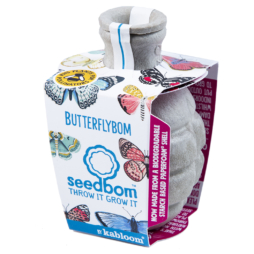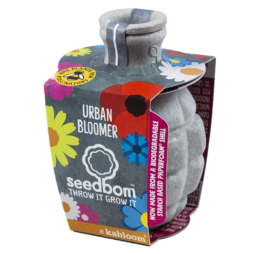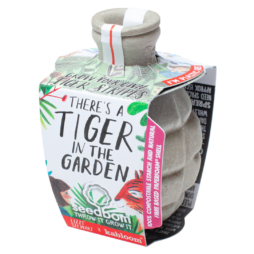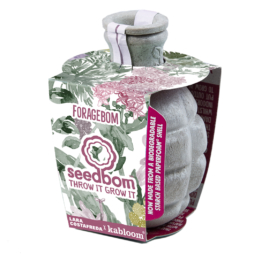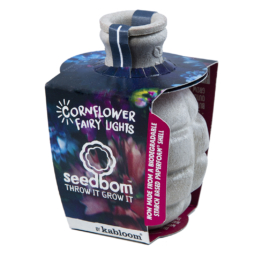The benefits of seed bombs
In the UK, more than 97% of our natural wildflower meadows have been lost to development and agriculture. That’s where seed bombs come in. They’re magical balls of compost, seeds and clay that burst on impact and create little patches of wildflower joy.
Seed bombing is an ancient Japanese practice called ‘Tsuchi Dango’ translated to ‘Earth Dumplings’. Introduced by Japanese microbiologist farmer, Masanobu Fukuoka, famous for his natural farming technique that involves trusting Mother Nature to do her work without the need for machines and chemicals. Seed bombs today share a similar philosophy; allowing nature to take it’s course.
They can be used in plant pots, flower beds, wild patches, on your lawn, in a meadow – you name it! They’re designed to promote wildlife and restore ugly, forgotten or unused pieces of land to beauty and health.
How do they work?
It couldn’t be easier; you don’t need any equipment or gardening skills. As the seeds are encased in compost and clay, they are essentially already planted in their own little ecosystem so all you have to do is distribute them.
The lightweight of the ball means you can toss it or scatter it anywhere. They split open upon impact after two-to-three weeks and after a little rainfall, the seeds work their way through the bomb and root into the ground below. Ideally you will wait until the frost is over, usually in Spring and coincide it with a rainfall to give the seeds a good kick-start.
If you are growing them in a meadow or somewhere away from your home, then it may be easier to let nature take its course. However, if you’ve used a seed bomb in your garden then there are a few things you can do to take care of it.
If there’s a lack of rainfall and you decide to water your seed bomb instead, ensure that it is soaked all the way through, and the outer layer starts to soften so it will break open completely. After that initial period they enjoy dampness: so damp to the touch but not soaking wet. They enjoy warmth from the sun and it’s best to stay clear of the Winter months as the seeds may not germinate if it’s too cold.
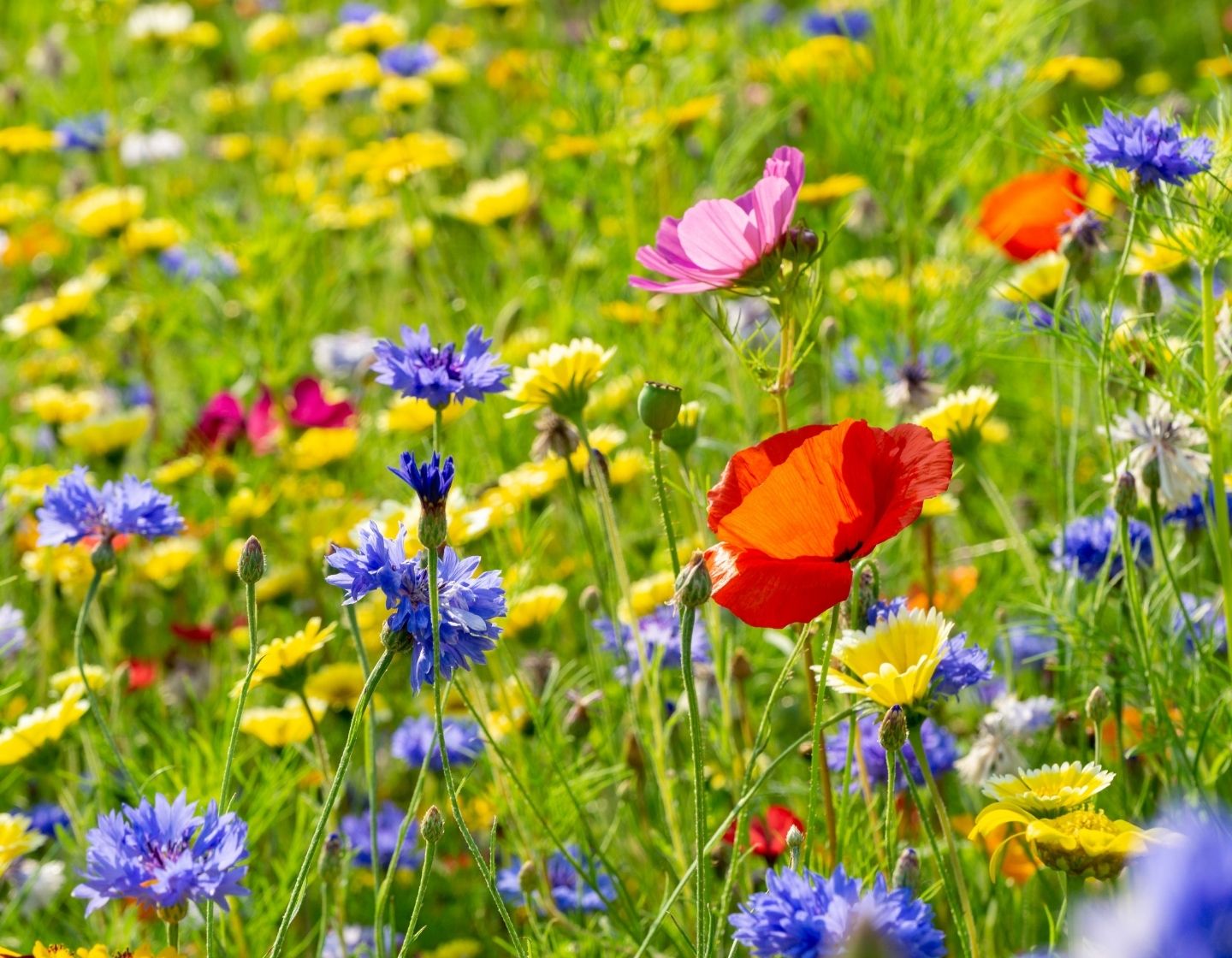
How many will I need?
For every square meter you will need about 20 seed bombs, for small pots, three to five and for bigger pots and window boxes, 8-12 seed balls. Your wildflowers will come back year after year, more abundant and beautiful than ever.
What are the benefits of wildflowers?
Seed bombs are used to recreate habitat and encourage wildlife to return. We rely on bees and other pollinators for 80% of our main sources, all for free! So, they play a vital role in our life and all they ask for in return is food sources. But in order for them to do their job, they need pollen and as we previously stated, the UK is seriously lacking natural wildflowers that bees and butterflies love. Seed bombs are an easy and effective way to restore biodiversity to our environment.
Additionally, wildflowers like lavender, primrose, fox gloves and lady’s mantle are used for many natural medical remedies. Not to mention their beauty They can completely transform a run-down, bare piece of land into something joyful and creative.
You don’t need a huge garden to encourage bees and butterflies to your home. A herb shelf on your windowsill or potted flowers on your balcony will do the trick too. Fun fact: bees love purple so try lavender, buddleia, honeysuckle, and alliums.
Plus, bringing some nature and beauty back into your local area is a super fun and environmentally friendly way to encourage community spirit and gives a chance to build new friendships.
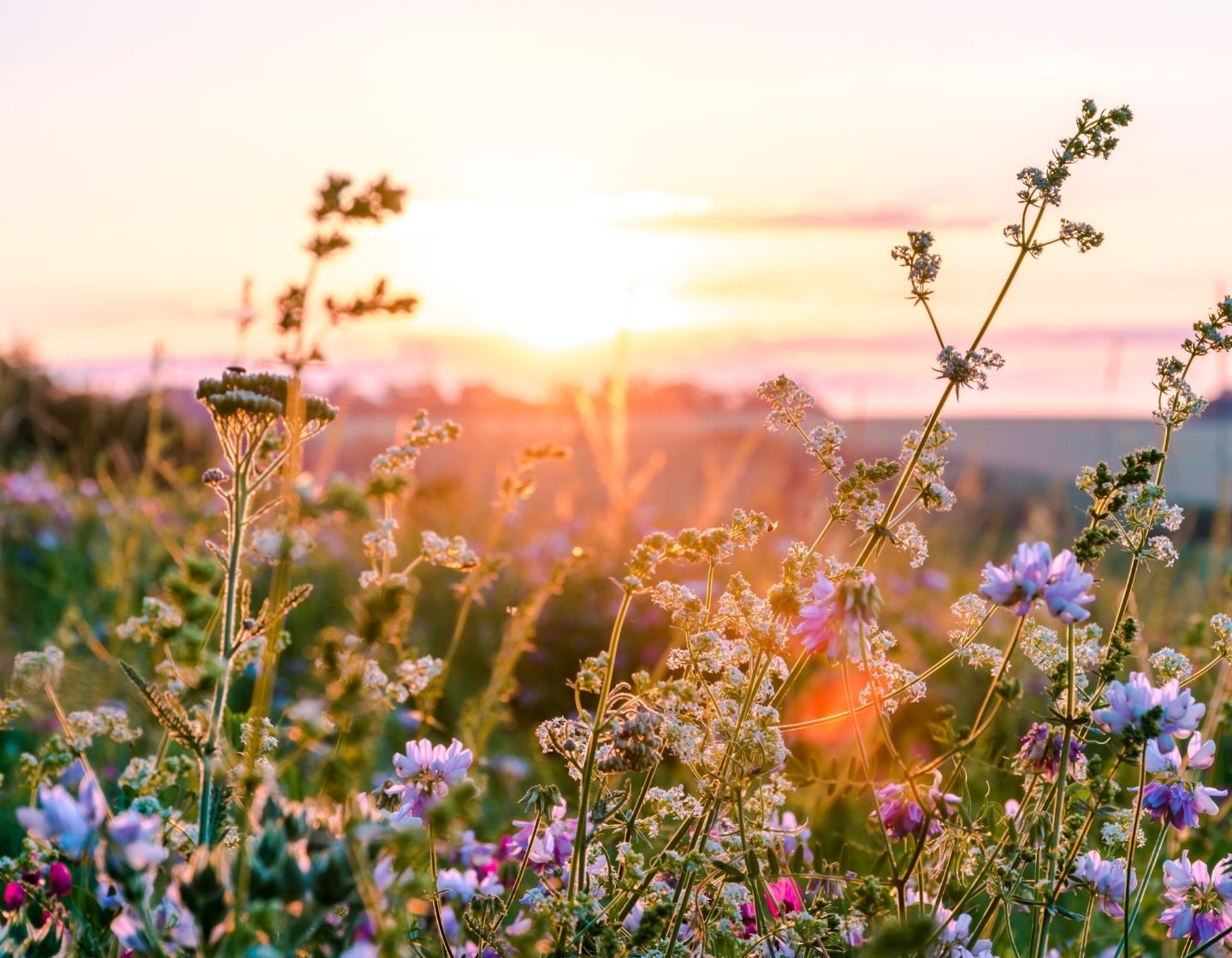
How long do seed bombs keep for?
They work best when used immediately but if you want to keep them, they can last up to six months if stored in a cool, dark, dry place to prevent spouting.
Do they really work?
Provided the soil isn’t too dry, compact, or overwhelmed with other vegetation, then yes. If you threw the seed bomb on an old industrial site, only Mother Nature can decide what happens next. There’s a lot of work that goes on under the surface of soil, so on a glance you may not see any chemicals or waste that could prevent germination or hinder growth.
Essentially seed bombs need three main ingredients to blossom: water, heat, and light. If you use the seed bombs in an area you know well and even spruce it up a little by getting rid of weeds, then the seeds will have a higher chance of success.
But be patient, the process takes time.

Why can’t I just throw some seeds on the ground?
Because seed bombs already have their own ecosystem, they’re packed with nutrients already which gives their growth a head-start. The outer shell protects the seeds from birds, ants and slugs and supports the root system until it biodegrades so there’s a lot more going on beneath the surface.
Protecting the seeds means there’s a higher chance of success and plus, it needs less time to germinate than simply scattering seeds.
Shop our eco-friendly outdoor range:
Introducing our eco-friendly outdoor range of products: Seedboms and Fothergill’s seeds! Now you can bring a new lease of life to any outdoor (or indoor!) space at home.
